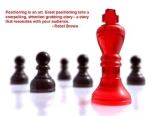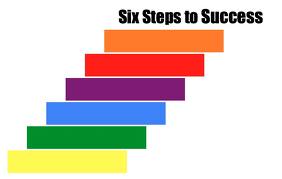Hi All,
If you would like to learn SPSS and its usage in research you can join online workshop on
Hi All,
If you would like to learn SPSS and its usage in research you can join online workshop on
“I hear and I forget, I see and I remember, I do and I understand”
– Confucius
From my point of view leadership can not be bounded by any no of myth….
Leadership is not fear… It is an attitude that keep a person positive
Good one

I’m an avid basketball fan. Ever since college, my friends and I have competed in fantasy basketball, and if you’ve ever played it, you know how time-consuming it can become. For the most part, I have to admit that for all the time I invest into this hobby of mine (I’m not even sure you can call it that), there is little to no real significance. But every once in a while, I come across a quote or a line that cuts across the narrow sports spectrum and connects to my life of faith.
The story of the post-Rondo Celtics is a picture of the powerful effects of belief. When Rajon Rondo’s season ended with an ACL injury, talk about the Celtics’ potential fall from prominence weren’t just whispered but outrightly proclaimed as fact. Without their point guard, how could an aging roster compete and win? The pundits quickly pointed…
View original post 421 more words
Introduction
“Today, communication itself is the problem.” Jack Trout and Al Ries believe our world has become over-communicated (more obvious to us today considering the book was written in the late 1970s) and that we receive more
Information than we give. A person’s mind can only take so much information and it blocks out everything that is not important or relevant. The authors define positioning as what you do to the mind of the prospect and not what you do to a product. Positioning is the “new” approach to communication where the goal is to position the product in the mind of the prospect.
Chapter 1 – What Positioning Is All About
The volume of communication will determine whether your message will come through to the prospect or not. We have to consider that so little of your message is going to get through anyway. In communication less is more. The most important thing to remember is to focus on the prospect rather than the product, as a result you turn the process around and you simplify the selection process.
Chapter 2 – The Assault on the Mind
In this chapter the authors give us some interesting facts that support their argument about an over-communicated world:
– America consumes 57% of the world’s advertising.
– Each year 30,000 books are published in America.
– 98% of all American homes have at least one television set.
– The average American family watches television more than 51 hours a week.
– 5,000 new products are introduced into the American market each year.
These numbers will most likely be higher in 2010 but it proves the importance of positioning and how businesses need to be effective with the message they expose their consumers with. For example, the average American family watches TV more than 51 hours a week. They will be exposed to many, many commercials during that time but most likely they will only remember a few.
Chapter 3 – Getting Into the Mind

In this chapter the authors talk about how a company can get into the prospects’ mind. The easiest way is by being the first into a person’s mind, while the hardest way is by being second. Most of us would know the name of the first person to walk on the moon, but not many can answer who was the second man to walk on the moon. Coca Cola Company was the first in cola. Xerox was first in copiers and Kodak was first in photography. This being said if you can’t be first then you have to find a way to position yourself against the product that got there first.
Chapter 4 – Those Little Ladders in Your Head
In today’s over-communicated world people have learned to rank brands or companies on a series of ladders in the mind. For example, when you think of the car rental industry some people might put Hertz on top of the ladder, Avis second and National in third. In this chapter Ries and Trout provide us with a great example which they call the “uncola” position about 7-Up. This strategy was brilliant in linking the product to what was already in the mind of the prospect, the “uncola” position established 7-Up as an alternative to a cola drink. Too many companies would have taken on the big guys head on and lost.
Chapter 5 – You Can’t Get There from Here
In this chapter Ries and Trout explain the importance of knowing when to quit or to stop t rying. Sometimes a company has to face the ugly truth and understand they will not get anywhere from where they are. The authors use IBM as an example of how to go against a powerful company in an industry where competition is very tough between few companies. The best strategy in this situation would be to take advantage of whatever positions they already own in the minds of their prospects and then relate them to a new position in that industry.
rying. Sometimes a company has to face the ugly truth and understand they will not get anywhere from where they are. The authors use IBM as an example of how to go against a powerful company in an industry where competition is very tough between few companies. The best strategy in this situation would be to take advantage of whatever positions they already own in the minds of their prospects and then relate them to a new position in that industry.
Chapter 6 – Positioning of a Leader
In this chapter the authors continue from earlier chapters to discuss the importance of being first in an industry with the highest market share. Once you get to the top it’s much easier to maintain that lead and stay there compared to how you got there. At the same time being number one in the industry does not mean you should act big-headed about it because that will only make your company come across as insecure and you will end up losing the position you had. Other leading industries do not understand that the power of the organization is derived from the power of the product and not the power of the organization. The power of the product is very underestimated and in many cases wrongfully viewed in many industries. When a company introduces a radically new concept you have to get away from the mindset of “let’s wait and see” but instead try to cover this move in order to be out in front.
Chapter 7 – Positioning of a Follower

Any me-too products have to get away from the typical American philosophy of the “bigger and better”. The authors call it “Cherchez le creneau”, which means to look for the hole. You must think reverse and find your “creneau” and fill it. For example, Volkswagen was famous for promoting their Beetle model with the famous ad that said: “Think small.” Volkswagen’s “creneau” was size and it challenged the prospect’s assumption that bigger is better. In finding your “creaneaus” you have to be careful and not fall in the trap where you try filling the hole in the factory rather than one in the mind.
Chapter 8 – Repositioning the Competition
In some cases a company can get to the point where they can’t find the “creneau.” The author’s believe that in a situation like that the company has to “reposition the competition.” In order to do that you have to take an old idea or product and move it out of the mind before you move a new one into the mind. For example, Tylenol repositioned aspirin by giving the consumer medical reasons on when and why you shouldn’t take aspirin. The ad finished with: “Fortunately, there is Tylenol…” Simple as that they succeeded in an effective repositioning strategy and Tylenol’s sales took off.
Chapter 9 – The Power of the Name

According to the authors the name of a product or a company is the best insurance for long-term success. You want to find a strong, generic-like, and descriptive name that will block your me-too competitors from getting into your territory. When choosing a name you have to be careful and not subtle and tricky, not clear, or names that get out of date. What about all the companies with meaningless names like Coca-Cola or Kodak? Well, those companies were first into the prospect’s mind that became famous and as a result the names could have almost been anything.
A name is a lot more powerful than what many people think and even realize. People make assumptions of what to believe about someone or something just by hearing a name. For example, take Cyril and John. Studies from psychologist David Sheppard show that people expect a Cyril to be sneaky and a John trustworthy. Take the airline industry; the four largest domestic carriers are United Airlines, American Airlines, Trans World Airlines, and Eastern Airlines. The airline that is consistently ranked four on passenger surveys is Eastern Airlines. Eastern has a regional name, compared to bigger names like American and United, which puts them in a different position in the prospect’s mind. In other cases you can just be unlucky such as how Goodrich was defeated to a larger company Goodyear. The names were too similar and Goodrich didn’t have a chance because Goodyear was bigger and more recognized in the prospects’ mind.
Chapter 10 – The No-Name Trap
In most cases today the name companies are better known than the initial companies. We are all familiar with successful initial companies such as IBM, AT&T, and P&G, but they all have one thing in common; they got to the top or became well known before they could use initials without ambiguity. Another important factor on using initials is that it not only has to look good but also sound good in order to reach into the prospect’s mind. In other cases, companies use initials because of sheer obsolescence.
Chapter 11 – The Free-Ride Trap
Many companies fall in the trap where they introduce a new product and use the same brand name of an existing product, which doesn’t help build the brand from the beginning. Other companies, such as P&G make new products and develop new names for each product that is independent and different from the brand itself. Ries and Trout believe that a single brand name cannot hold multiple positions in a prospect’s mind. Either the new product will not be successful or the original product bearing the name will lose its leadership position.
Chapter 12 – The Line-Extension Trap
Line extension is one of the most significant trends in the past decade of marketing history. Yet, according to Ries and Trout you have to be careful in how you use it. Line extension works against the generic brand position because it blurs the sharp focus of the brand in the mind. Ries and Trout talk about some examples of failure due to this problem and one of them is “the diet-cola war.” This was between Diet Pepsi and Tab where basically the consumer looked at Diet Pepsi as an inferior product to regular Pepsi, while Tab stood on its own. As a result, Tab was the marketing winner.
Chapter 13 – When Line Extension Can Work
In this chapter Ries and Trout talk about when line extensions can work instead of creating a new brand. The authors came up with five reasons on when to use line extensions:
1. Expected Volume – Small-Volume products should.
2. Competition – In a crowded field (market), it should.
3. Advertising support – Small-budget brands should.
4. Significance – Commodity products should such as chemicals should.
5. Distribution – Items sold by sales reps should.
Chapter 14–19 (Case Studies)
In these chapters Ries and Trout talk about case histories that illustrate how positioning can be applied in different situations. In chapter 14 they do a case history on a company called Monsanto (chemical company). This company was ranked third in product leadership behind industry leader DuPont. Monsanto found the hole that would give them the industry leadership. During a time when chemicals were under attack, Monsanto told the public about the benefits of chemicals as well as the risks and as a result they were recognized as the leader. That is, speak for the industry.
In chapter 15 we can read about another case history but this time positioning a country: Belgium. Sabena Belgian World Airline, one of the 16 major North Atlantic carriers, had captured all traffic to Belgium but the truth was that none were flying to this little country. Well, the answer to the problems of a national airline like Sabena was to position the country, not the airline. They were able to relate Belgium to a destination that was already in the mind of the traveler and from there they could easier be recognized. Even so this program was never fully implemented and the lesson from this was that any positioning program requires long-term commitment by the people in charge in order to be successful.
In chapter 16 Ries and Trout give us a case history on positioning a product: Milk Duds. This is a small budget company that was able to reposition the competition by being America’s long-lasting alternative to the candy bar. According to the authors, the lesson to be learned from this chapter is that: “the solution to a positioning problem is usually found in the prospect’s mind, not in the product.”
In chapter 17 they study the positioning of a service: Mailgram. This study illustrates why a really new service has to be positioned against the old. The following chapter is another study where they look at positioning a Long Island Bank. It includes how a bank can successfully retaliate when its field gets invaded by its giant competitors.
In chapter 19 they talk about an interesting case history on positioning the Catholic Church. It proves that even an institution can benefit from good positioning. Not long ago the Catholic Church struggled with presenting a clear view of what the church was about and it lead to confusion among the people. The church had to figure out their role in the modern world in order to be trusted again. This role was proven to be the “teacher of the word.” After this was identified it had to be implemented and a positioning strategy was needed to be taken into action. The plan had to be executed but with much resistance from the management of the Catholic Church it never went through. As the author’s describe it in the book: “simplicity is not as attractive as complexity.”
Chapter 20 – Positioning Yourself and Your Career

Positioning can also be used to promote a person and not just a product or
company. The first thing you need to do is to define yourself. Secondly, you can’t be afraid to make mistakes because in every aspect of life you have to take some risks sometimes. Third, make sure your name is right. Finally, try to avoid the no-name trap and the line-extension trap.
Ries and Trout continue in this chapter to talk about “finding a horse to ride.” Trying harder is not always the answer to success, but working smarter is. Ries and Trout’s “Six horses” are:
1. The first horse to ride is your company – Find a growing company that is going somewhere, such as tomorrow-type products like computers, electronics, optics, and communications.
2. The second horse to ride is your boss – Ask the same question about your boss as you asked yourself about your company. Is he going anywhere? If he is, then chances are good that you are too.
3. The third horse to ride is your friend – Try to make as many friends as you can outside your own organization, and you will greater chances of getting a big, rewarding job.
4. The fourth horse to ride is an idea – Don’t be afraid of conflict and be willing to go against the tide in order to come up with new idea.
5. The first horse to ride is faith – Try to go outside of yourself in order to find fortune.
6. The sixth horse to ride is yourself – The most difficult horse to ride is yourself. It’s not easy to succeed in life or business by yourself. To succeed you have to understand that business is as much cooperation as competition.
Chapter 21 – Six Steps to Success
In this chapter Ries and Trout developed six questions that will trigger your mind and help you get a better understand of where you are and where you want to go. These are the six questions:
go. These are the six questions:
1. What position do you own?
2. What position do you want to own?
3. Whom must you outgun?
4. Do you have enough money?
5. Can you stick it out?
6. Do you match your position?
In addition to these steps to success the role of the outsider also plays an important role. Most large companies today have the advantage in hiring an ad agency to position a product. These companies don’t know what’s going on inside the company, but they know everything happening on the outside and what’s in the mind of the prospect.
Chapter 22 – Playing the Positioning Game
In this final chapter Ries and Trout talk about what you need to do to be successful at positioning. First of all you need to have the right mental attitude and become an outside-in thinker rather than an inside-out thinker. This requires patience, courage and strength of character. Further, you have to use words in a right way in order to trigger the meanings which are buried in the mind.
In my previous blog i have discussed about the Leadership and internal power.
What is an Internal Power? How can we develop our Internal power? Is It necessary to develop ?
Every human having the same mind but it is necessary to use. It will more active as u are active in using mind to work.
internal power means not only the capacity of our body but also it related with our mind.
basically for knowing our internal power, the first thing that we should know about
“Who I am.”
A person who know about himself can also able to know anything that he want or desire to want. there is nothing to be impossible but it is necessary to make it possible.
whatever you like, think on it and go forward to work on it.
we must learn the lesson from many animals
A) Ant:- Never Stop
B) Elephant- Always use our capacity
C) Dog: Always be faithful for yourself
D) Cat And Crow: be Clever
so there are many this from where we can learn a lot. but it is necessary to think positive. and the main thing is to know about our self. write our strength and weakness. what can we do and can’t do . let us think to make our self a great Leader and make anything possible.

“EVERY HUMAN HAVE SOME QUALITY:, IT IS NEEDED TO FIND OUT” OR WE CAN SAY THAT THERE IS SOME EXTERNAL AND INTERNAL POWER IN EVERY HUMAN BUT NEEDED TO EXPRESS IT OUT…..